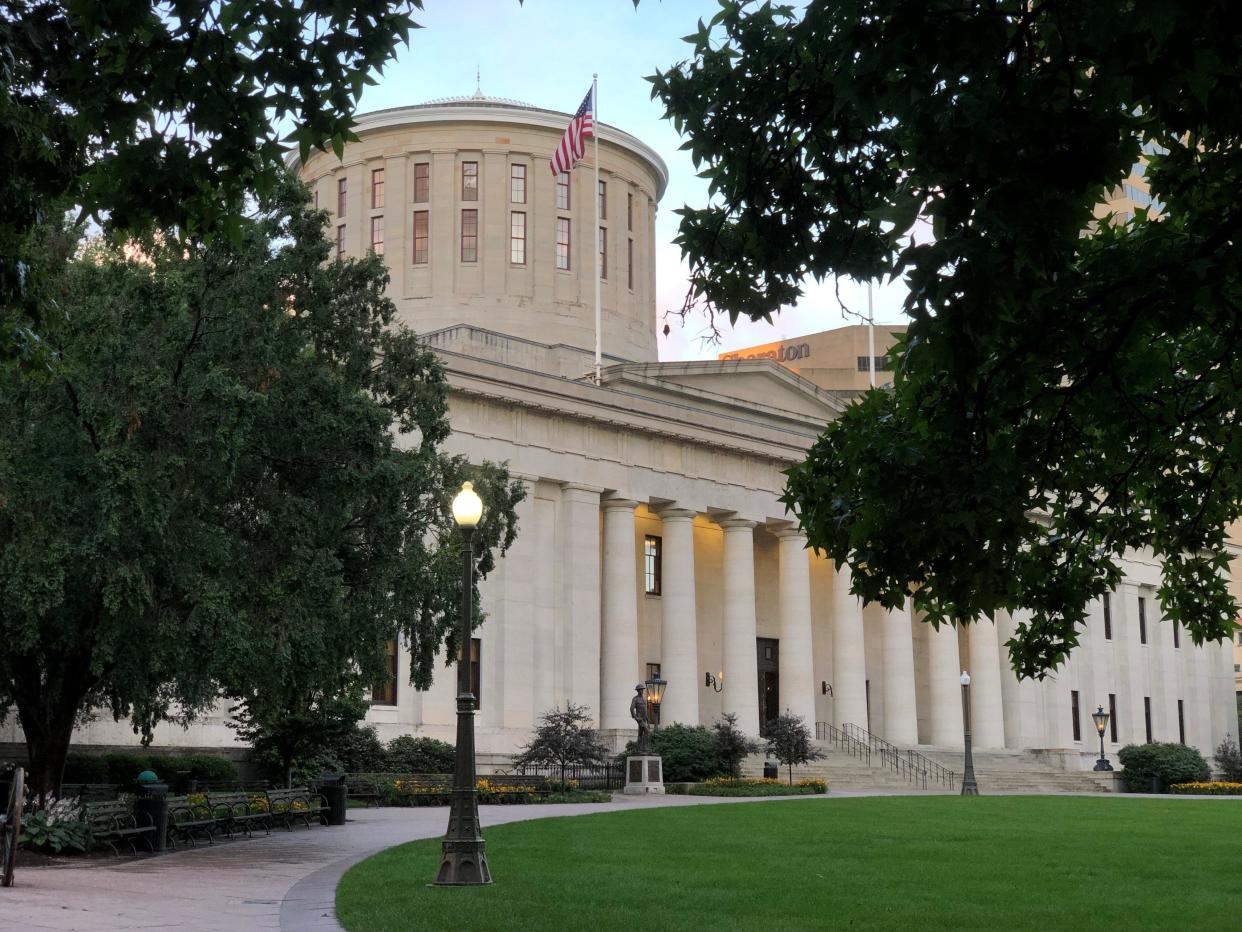Beware. Ohio lawmakers are in session and unafraid of payback from voters| Thomas Suddes

Thomas Suddes is a former legislative reporter with The Plain Dealer in Cleveland and writes from Ohio University. tsuddes@gmail.com
“No man's life, liberty or property are safe while the Legislature is in session."
That’s what a New York judge ruled in the 1860s — and what an Ohio judge could fairly say today, in 2022, about the Ohio General Assembly’s post-election lame-duck antics.
Like houseguests who overstay their welcome, the legislature and its camp-followers, who throng the Statehouse lobbies, refuse to go home, though the 134th General Assembly legally expires on Dec. 31.
Thomas Suddes: Frank LaRose wants to rewrite history to hijack your century-old right
And that’s despite the fact that the (newly elected) 135th General Assembly is scheduled to start meeting (“start work” would be a reach) less than a month from now, on Jan. 3.
Why are some (not all) legislators hanging around the Statehouse when retirement beckons for many, and holidays beckon for them all?
Simple: Retiring legislators will never again face voters. And elected or re-elected House members won’t again face voters sooner than 23 months from now — and some elected or re-elected state senators, not for 47 months.

Accordingly, the two months following a November legislative election are the best times to duck political payback from voters when passing rancid legislation.
That’s why, for example, the General Assembly gives itself pay-raises during lame duck sessions. That’s what a Republican bill did near Christmas 2018 (passed over Republican Gov. John R. Kasich’s veto), and what a Democratic bill did late in 1984.
This year, the base pay for a state senator or state representative in Ohio has been $68,674. That will increase by 1.75% in January, to approximately $69,876 for part-time jobs (plus state health-care benefits and Public Employees Retirement System pensions); almost all legislators will be paid more the base because of salary supplements for committee chairs and the like.
More:Senate's top aides awarded raises of 4%-33%
(According to the Census, median household income in Ohio is estimated to be $58,116.) In fairness, a pay-raise bill is not on the horizon for this year’s lame-duck session.
Otherwise, this lame-duck session is being conducted true to form by taking up measures that would have been politically radioactive before Nov. 8.
For example, the legislature is considering making it harder to amend the state constitution — requiring a 60% “yes” vote rather than the 50% plus one vote required now.
Suddes:GOP wants to crush your voting power to make it harder to restore abortion rights
Frank LaRose: There's no 'knife to the neck' of voters on constitutional changes
That would almost certainly make it more difficult to restore women’s access to abortion in Ohio.
Making the Ohio Constitution harder to amend would also make it harder to stop the gerrymandering of General Assembly districts and congressional districts by GOP leaders.
This year’s lame ducks are also messing with Ohio’s election laws -- not in a voter-friendly way -- and likely will fetter Ohio’s voter-created State Board of Education, as well.
There was nothing stopping the legislature from making those changes before Nov. 8’s election -- except of course out of fear that voters, tipped off to legislators’ goals, might rebel.
More:Ohio lawmakers move to change election laws, voter ID requirements
Reduced to essentials, to give 41% of a given pool of voters the power to block ballot issues creates a veto over the remaining 59% of the pool.
That may sound keen to some people. But why should it require an extraordinary majority to approve, say, state highway or conservation bonds, when only a simple majority of the electoral college (270 votes of 538) is required to elect a president of the United States?
Of course, the saving part of the 60% plan, if the General Assembly submits it to Ohio voters net year, is that voters in turn may kill it — as they should. Otherwise, voters would be handing a blank check to a General Assembly that already reaches too far too often and has a real hard time taking no for an answer from voters.
The fact is that Ohioans’ power to amend their state’s constitution — hardly easy now — is about the last Ohio safeguard against the overwhelming power of one-party rule, by either party, at the Statehouse.
Trying to weaken that protection is the real story of the 60% proposal, it’s the real issue with the proposal —and it’s the real peril of the proposal to all Ohioans.
Thomas Suddes is a former legislative reporter with The Plain Dealer in Cleveland and writes from Ohio University. tsuddes@gmail.com
This article originally appeared on The Columbus Dispatch: Why should Ohio voters be afraid of lame duck session

